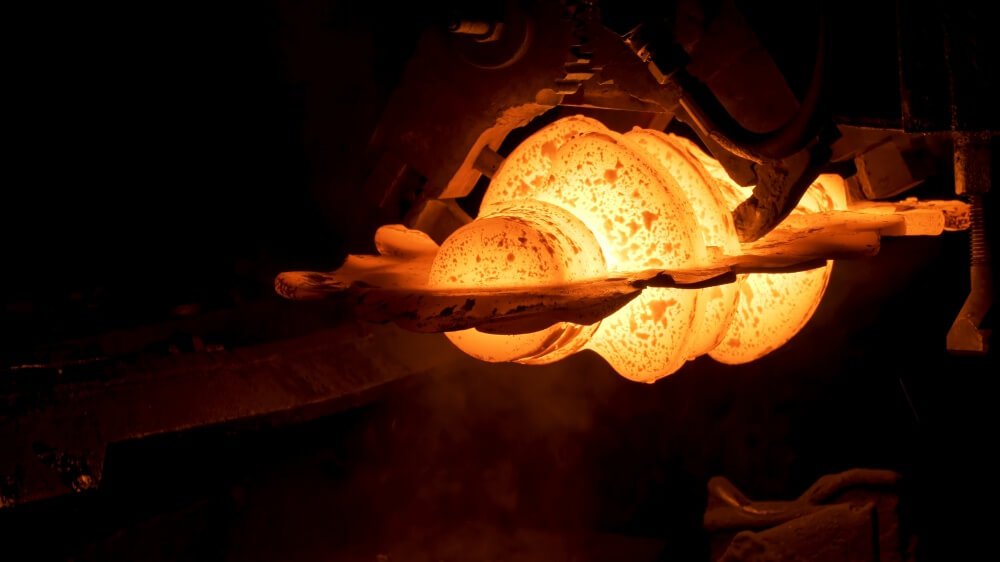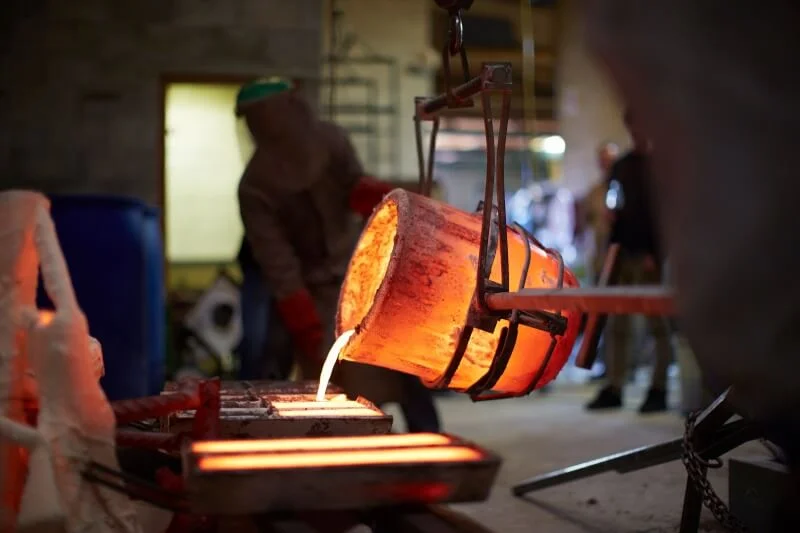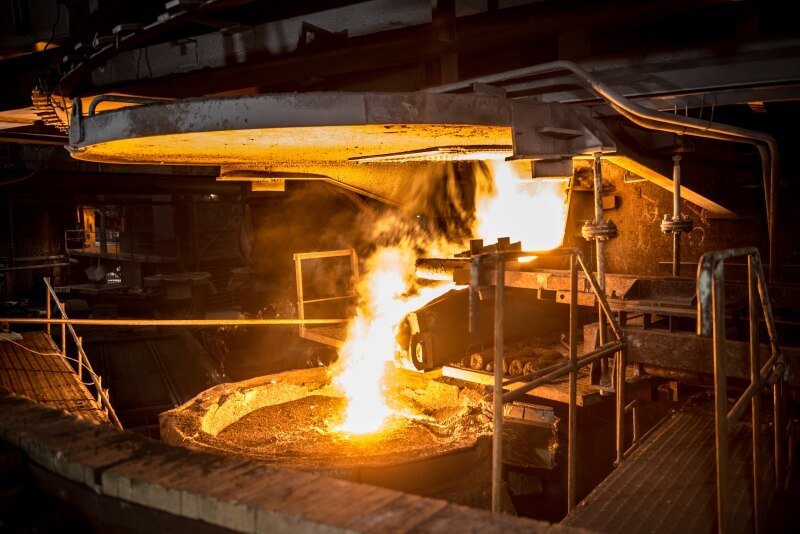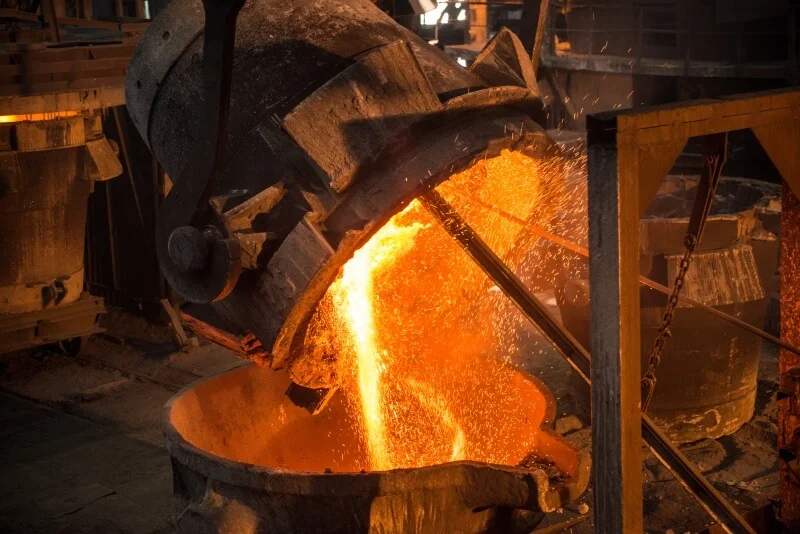You need a high-quality aluminum part, but comparing aluminum casting methods—from die casting to sand casting—can be overwhelming. Each path changes cost, quality, and lead time. Choose poorly and you risk blown budgets from steep tooling, parts that fail under load, or throughput bottlenecks that stall your launch.
This guide cuts through the confusion. We will analyze the three primary aluminum casting methods, breaking down their specific strengths and weaknesses. You’ll gain the clarity to make an informed, cost-effective decision for your project’s unique needs.

Intro to aluminum casting methods
What are the primary options?
You might be wondering, what are the main choices? The world of aluminum casting primarily revolves around three core techniques. Each one serves a different purpose based on your project goals.
- Sand Casting
- Permanent Mold Casting
- Die Casting
Why does the method matter so much?
Here’s the deal: the process you select directly impacts your part’s final properties and your project’s budget. A choice that looks good on paper might not deliver the strength you need. Another might be too expensive for your production volume.
- Material strength and integrity
- Surface finish quality
- Tooling and per-piece costs
- Production speed and scalability
How do I start the selection process?
The bottom line is this: you need to start by defining your project’s non-negotiable requirements. Understanding what you truly need from your part is the first step. This clarity helps you filter out methods that aren’t a good fit.
- Define your budget for tooling and per-piece cost.
- Determine the required strength and durability.
- Estimate your total production volume.
Key Takeaway: Understanding the fundamental differences between the three main casting methods is the first step toward aligning the right process with your project goals.
| Consideration | Question to Ask Yourself |
|---|---|
| Budget | What is my total budget for tooling and production? |
| Quality | What level of strength and finish does my part require? |
| Volume | How many parts do I plan to produce in total? |
Sand: top aluminum casting methods
What is the sand casting process?
Let’s get right to it: sand casting uses a mold made from a sand mixture. A pattern creates the part’s shape in the sand, and molten aluminum is poured in. Once the metal cools, you simply break the sand mold away.
- A single-use mold is created from a sand mixture.
- Cores can be added for complex internal shapes.
- Molten aluminum is poured into the mold cavity.
- The sand mold is destroyed to retrieve the part.
Is sand casting good for prototypes?
Think about it: this method is the top choice for prototyping and short production runs. The reason is simple: the tooling costs are exceptionally low compared to other methods. You can get a physical part in hand without a massive upfront investment.
- Low initial tooling cost.
- Fast turnaround from design to prototype.
- Ideal for testing and design validation.
Can this method handle complexity?
What’s the catch? While excellent for prototypes, it’s also surprisingly versatile. The use of internal sand cores allows for the creation of intricate internal passageways and complex geometries that might be difficult or impossible with other methods.
- Internal cores create complex hollow sections.
- Accommodates very large part sizes.
- Flexible for design changes during prototyping.
Key Takeaway: Sand casting is the most flexible and cost-effective option for low-volume production and prototyping, especially when tooling costs are a primary concern.
| Criteria | Sand Casting | Permanent Mold Casting | Die Casting |
|---|---|---|---|
| Best for Prototypes | Excellent | Fair | Poor |
| Tooling Cost | Low | Medium | High |
| Part Complexity | Good | Fair | Good |
Mold: classic aluminum casting methods
How does permanent mold casting work?
Here’s how it works: this process uses a reusable metal mold, typically made of steel in two halves. Molten aluminum is poured into the mold using gravity, and once the part cools, the mold is opened and can be used again for thousands of cycles.
- The mold is reusable for many cycles.
- Molten aluminum is typically poured using gravity.
- Two mold halves are separated to remove the part.
- Offers a good balance between cost and quality.
Is this method for strong parts?
You should know this: parts made with permanent mold casting have the greatest material strength compared to the other common methods. The rapid cooling against the metal mold creates a fine grain structure, which enhances the part’s mechanical properties.
- Produces the strongest aluminum parts.
- Fine grain structure improves durability.
- Ideal for structural components.
What is the surface finish like?
The reality is, permanent mold casting produces a much smoother surface finish than sand casting. This superior finish often reduces or eliminates the need for secondary finishing operations like machining or polishing, saving you time and money.
- Results in a good, clean surface finish.
- Reduces post-production costs.
- More dimensionally accurate than sand casting.
Key Takeaway: Choose permanent mold casting when you need superior part strength and a good surface finish for medium to high-volume production runs.
| Criteria | Sand Casting | Permanent Mold Casting | Die Casting |
|---|---|---|---|
| Material Strength | Good | Excellent | Very Good |
| Surface Finish | Rough | Good | Excellent |
| Mold Lifespan | Single-Use | High | Very High |
Die: modern aluminum casting methods
What makes die casting different?
Here’s the main difference: die casting is similar to permanent mold because it uses a reusable steel die (mold). However, instead of pouring the metal, die casting injects molten aluminum into the mold cavity under extremely high pressure.
- Molten aluminum is injected under high pressure.
- The process is extremely fast and highly automated.
- Results in parts with excellent dimensional accuracy.
- Requires a very high initial tooling investment.
Is die casting the fastest option?
Absolutely. The pressurized injection process makes die casting the fastest of all aluminum casting methods by a wide margin. This speed makes it the undisputed champion for mass production where cycle time is a critical factor.
- Fastest cycle time per part.
- Ideal for automated, high-volume manufacturing.
- Reduces per-piece labor costs significantly.
When does die casting make sense?
It’s simple: this method is the best choice when you need to produce extremely high quantities. If your project calls for volumes typically over 100,000 units and requires a superior surface finish, die casting is the way to go.
- Best for quantities over 100,000 units.
- Delivers the lowest per-piece cost at high volumes.
- Produces parts that require minimal finishing.
Key Takeaway: Die casting offers unmatched speed and the best surface finish, making it the premier choice for very high-volume production where the initial tooling investment is justified.
| Criteria | Sand Casting | Permanent Mold Casting | Die Casting |
|---|---|---|---|
| Production Speed | Good | Better | Best |
| Best for Quantity | Low | Medium | Very High |
| Tooling Cost | Low | Medium | High |
Compare aluminum casting methods: Speed
Which process is fastest for one part?
Let’s break it down: if you need a single prototype quickly, sand casting is the winner. The speed comes from the minimal tooling setup required. You can go from a digital design to a physical part in your hand faster than with any other method.
- Fastest for initial tooling and setup.
- Ideal for one-off parts and prototypes.
- No need for expensive, time-consuming steel molds.
Which is fastest for mass production?
There is a clear winner: die casting is unbeatable for cycle time in mass production. Its automated, high-pressure injection process can churn out parts in seconds. While sand casting can be automated, it cannot match the per-part speed of die casting.
- Die Casting: Fastest cycle time per part.
- Permanent Mold: Slower cycle than die casting.
- Sand Casting: Slowest cycle time of the three.
Key Takeaway: Your definition of “speed” matters. Sand casting is faster for initial setup and prototypes, while die casting is fastest for per-part production at high volumes.
| Speed Factor | Sand Casting | Permanent Mold Casting | Die Casting |
|---|---|---|---|
| Tooling Speed | Fastest | Medium | Slowest |
| Per-Part Speed | Slowest | Medium | Fastest |
Compare aluminum casting methods: Strength
Which method produces the strongest part?
The answer is clear: permanent mold casting yields parts with the highest material strength. This makes it the top choice for applications where the component will be under significant stress or load.
- Permanent Mold: Produces the strongest parts due to a controlled cooling process.
- Die Casting: Very strong, but the high-pressure injection can sometimes trap gas, creating porosity.
- Sand Casting: Good strength, but the slower cooling in sand creates a coarser grain structure.
Why is permanent mold casting stronger?
You might ask why. The secret is in the cooling process. The gravity-fed pour is less turbulent, and the rapid chilling from the metal mold creates a fine, dense grain structure. This metallurgical advantage directly translates to increased strength and durability.
- Slower, gravity-fed pour reduces turbulence.
- Metal mold chills the aluminum quickly.
- Results in a finer, stronger grain structure.
Key Takeaway: For applications where maximum material strength and durability are critical, permanent mold casting is the superior choice.
| Strength Ranking | Material Property |
|---|---|
| #1 Strongest | Permanent Mold Casting |
| #2 | Die Casting |
| #3 | Sand Casting |
Compare aluminum casting methods: Cost
Which method has the lowest startup cost?
Without a doubt, sand casting offers the lowest initial tooling cost. Creating a pattern and sand mold is far less expensive than machining a complex steel die. This makes it the perfect entry point for prototypes and small batches.
- Lowest tooling investment by a large margin.
- Ideal for projects with limited budgets.
- Allows you to test a design before committing to expensive tooling.
When does high tooling cost pay off?
Here’s the tipping point: the high tooling cost of die casting is justified when producing hundreds of thousands of parts. Over a massive production run, the extremely low per-piece cost more than compensates for the initial investment.
- Sand Casting: Low tooling cost, higher per-piece cost.
- Permanent Mold: Medium tooling cost, medium per-piece cost.
- Die Casting: High tooling cost, lowest per-piece cost.
Key Takeaway: Your total production volume is the most important factor in determining the most cost-effective method over the life of the project.
| Cost Factor | Sand Casting | Permanent Mold Casting | Die Casting |
|---|---|---|---|
| Tooling Investment | Low | Medium | High |
| Per-Piece Cost (High Vol.) | High | Medium | Low |
| Best for < 1,000 Pcs | Yes | No | No |
| Best for > 100,000 Pcs | No | No | Yes |
Compare aluminum casting methods: Finish
Which methods give the best surface finish?
It’s a tie, almost. Both permanent mold and die casting offer a smooth surface finish right out of the mold. Die casting generally has a slight edge, producing a near-net-shape part with an excellent, smooth finish that is ready for coating or use as-is.
- Die Casting: Excellent, smooth finish.
- Permanent Mold: Very good, smooth finish.
- Sand Casting: Rough, textured finish due to the sand grain.
Does a better finish save money?
Yes, it does. A smoother as-cast finish reduces or even eliminates the need for costly and time-consuming secondary operations. You can avoid expenses related to machining, grinding, or polishing, which adds up to significant savings.
- Reduces labor costs for finishing.
- Shortens the overall production timeline.
- Improves the cosmetic appeal of the final part.
Key Takeaway: If a smooth, clean surface is a cosmetic or functional requirement, choose permanent mold or die casting to minimize post-production costs.
| Surface Finish Quality | Requires Secondary Finishing? |
|---|---|
| Die Casting | Rarely |
| Permanent Mold | Sometimes |
| Sand Casting | Almost Always |
Key factors in aluminum casting methods
How does part size affect my choice?
Here’s a key constraint: for very large parts, sand casting is often the only practical method. Creating massive steel molds for permanent mold or die casting would be prohibitively expensive and difficult to handle. Sand casting scales up easily for large components.
- Sand casting is best for very large parts.
- Die casting is limited to small-to-medium-sized parts.
- Permanent mold casting is suitable for small-to-medium parts.
What if I need high production volume?
Look at the numbers: your production volume is a decisive factor. For quantities well over 100,000, die casting is almost always the right answer. For mid-range volumes, permanent mold is a strong contender, offering a balance of quality and cost.
- Low Volume / Prototype: Sand Casting
- Medium-High Volume: Permanent Mold Casting
- Very High Volume: Die Casting
Key Takeaway: A balanced scorecard approach is the best way to make a final decision. You must weigh volume, cost, strength, and finish together to find the optimal method for your specific needs.
| Project Need | Primary Method | Secondary Method |
|---|---|---|
| Speed | Die Casting | Sand Casting (for tooling) |
| Strength | Permanent Mold | Die Casting |
| Low Cost (Tooling) | Sand Casting | N/A |
| High Volume | Die Casting | Permanent Mold |
Your guide to aluminum casting methods
Have you defined your primary goal?
First things first: what is your number one priority? Is it getting a part made as cheaply as possible, making the strongest part possible, or producing parts at the fastest possible rate? Answering this one question will narrow your options significantly.
- If cost is the priority, start with sand casting.
- If strength is the priority, look at permanent mold.
- If speed at high volume is the priority, consider die casting.
Have you calculated your total volume?
Now, do the math: your expected production quantity is the single biggest factor influencing the cost-effectiveness of each method. A choice that is cheapest for 100 parts will be the most expensive for 100,000 parts.
- If quantity is low -> Sand Casting.
- If strength is key -> Permanent Mold Casting.
- If speed at high volume is needed -> Die Casting.
Key Takeaway: By answering a few targeted questions about your project’s specific needs for cost, quality, and quantity, the right aluminum casting method becomes clear.
| If you need… | Then choose… |
|---|---|
| Low-cost prototypes | Sand Casting |
| Maximum part strength | Permanent Mold Casting |
| Fastest mass production | Die Casting |
| A balance of cost & quality | Permanent Mold Casting |
Conclusion: Making Your Final Casting Decision
You are now equipped to navigate the complexities of aluminum casting. You can confidently assess your project’s requirements for speed, strength, volume, and cost to select the most efficient manufacturing process. Our goal is to be more than a supplier; we are your partner in manufacturing excellence.
Still have questions? Our team of casting experts is ready to help analyze your specific application and provide a tailored recommendation.
Ready to get started? Contact us today to request a quote and let us put our decades of casting experience to work for you.
Frequently Asked Questions (FAQ)
1. Can I use sand casting for a production run of 200,000 parts?
No. While sand casting is excellent for lower quantities, die casting is far more cost-effective and efficient for volumes that high due to its low per-piece cost.
2. Can I get a part as strong as steel with aluminum casting?
No. While permanent mold casting produces very strong aluminum parts, they will not match the inherent material strength of steel. However, for many applications, the strength-to-weight ratio of aluminum is superior.
3. Can I create a prototype with die casting?
No, this is not recommended. The extremely high tooling cost for die casting makes it financially impractical for creating a single prototype or a short run of parts. Sand casting is the correct method for prototyping.
4. Can I embed a steel component inside my aluminum part?
Yes. This is a common practice, especially in permanent mold casting, to create parts with added strength or specific wear characteristics in critical areas.
5. Can I avoid all machining with die casting?
Not always. While die casting produces a superior surface finish and excellent dimensional accuracy, some critical features or tight tolerances may still require secondary machining operations.




